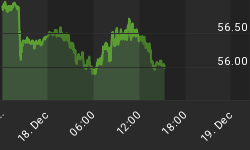Over the last several months the stock market has worked its way into a trading range, and has basically been fluctuating within about 10% of its 12-month highs, despite the recent wave a positive economic data that has recently washedaway the fears of many investors.
The most likely explanation for the market's inability to follow-through on good news is that a good deal of the data now coming out may have been expected by the market, and been priced in. In any case, stocks are now likely looking ahead, with some consensus forming about the likelihood of another stimulus package, the sustainability of recent corporate earnings, and forecasting how November will play out in Washington.
While the broad market has assumed a sense of suspended animation, there are still several sectors that have been on the move. This is the big reason we have always taken a negative stance towards excess diversification. After all, an ability to forecast winning sectors is why money managers get paid.
While some sectors have been on a hot streak lately, the prospects for others are not nearly so bright. Gold, for example, has lately seen a slight rally, but we expect that its correction is not yet finished. In recent weeks we've tried to point out the recent inflation of gold's price (Gold Loses Luster as Earnings Ignite, Glenn Beck-onomics and Rusty Gold), but judging by the influx of angry e-mails, our warnings seem to have fallen mostly on deaf ears.
Unfortunately the story has been nearly the same in the case of Treasury bonds. No one seems to want to see what is in front of their very eyes: Treasury yields are now at generational lows, and investors buying now will see a likely serious loss of principal over the next 5 years.
Yesterday on CNBC one commentator at the gall to argue that a bubble in Treasuries simply isn't possible, that Treasury yields reflect nothing more than a flight to quality. This same argument has been used for gold at different points in history, as well as real estate in the early 2000s. Unfortunately the story always seems to end the same way, and it's never very good for the client.
As a test for their advisors, clients should try posing the following question: "What would happen to the value of a given bond if interest rates on 30-year Treasury bonds went to 7% (which is hardly uncommon from a long-term perspective)?" If they say they don't know, run; if they say it can't happen, hide!
While many investors have lately been piling into bonds, gold, and other hedges against either inflation or deflation, we so far fail to see what is unattractive about equities. For the most part, companies still have good balance sheets; and though many have started assuming small amounts of debt, in most cases, any leverage is easily covered by cash and liquid assets.
Long-time readers will remember that around this time last year we cited an article from the Wall Street Journal that stated U.S. non-financials were, at the time, sitting on nearly $14 trillion in cash and liquid assets, approximately equal to one year's worth of US GDP (Where Consumers Fail, Can Businesses Lead?, Gongloff).
While companies may have begun borrowing, our expectation is that it is to fund expansion projects, which will ultimately lead to falling unemployment numbers as America goes back to work. As such, borrowing by American companies, which had shunned debt after the 2008 financial crisis, may be something to welcome, rather than fear.















